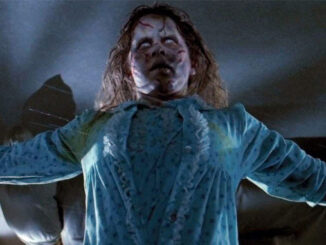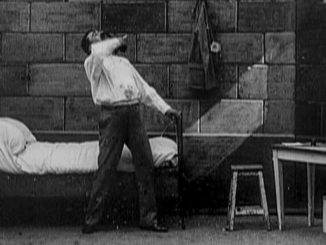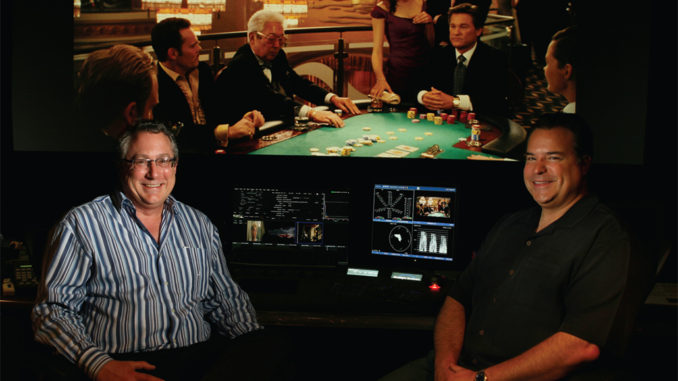
by Debra Kaufman
Telecine operator, colorist, digital intermediate (DI) artist… We’ve heard the terminology, but do we really know what the Guild members in this classification do? Much like picture editors, they’ve seen the technology they use transition from analogue to digital. CineMontage spoke to a handful of Los Angeles-based colorists to get a picture of what telecine was, how technology has transformed it, and how they see their role in the color correction suite.
The Early Days of Telecine
The early days were analogue. When Warner Bros.’ Jan Yarbrough started 32 years ago, he used what was called a “film chain.” “We threaded film on a Graflex graphics film projector, which went through a mirror device called a multiplexer, that was shown into a specialized camera,” he explains. “You were basically projecting the film into a video camera, with no shot-by-shot or scene-by-scene color correction.”
Things improved when a company called Bosch came out with a color correction device, the FDL-60. But the process was still laborious; the color correction settings were output via punched paper tape. Near the same time, Rank Cintel developed what was called a “flying spot scanner,” which was the bleeding edge of its day.
Westwind Media supervising colorist Randy Starnes, who has been a colorist since 1980, also recalls those early days. “In the mid-1980s, the technology was analogue,” he says. “There was the Bosch and the Rank Cintel Mark III, which had the market share far and away.” The Rank Cintel, according to Starnes, was a tube-based system, which resulted in “a good deal more drift than on a CCD [charge-coupled device, an image sensor].” “There was no perfection; it wasn’t even in the equation,” he continues. “The noise-to-signal ratio was high, and that was considered the look of the film.”

“You could always interest clients in being the first on the block to utilize the Rank Cintel,” adds Yarbrough. “The downside was that it was new technology so you were spending hours behind the scenes getting it to behave itself. Because it drifted so badly, I had to do readjustments. I would do a set-up first thing in the morning, another mid-day and another halfway in the afternoon.”
With the advent of the Bosch FDL-60 and Cintel Mark III, said Starnes, people in the industry finally felt comfortable with the technology. “They felt confident enough that we started doing negative transfers,” Yarbrough explains. “TV shows were still sent to stations on print film, and transferring negative changed the entire workflow. That was the start of the decline of the film lab that could be found in every community that had a news organization.”
Level 3 senior colorist Larry Field remembers transferring old TV shows for syndication and new music videos. “Everything was analogue and we were working on telecines like Rank Cintel Mark III, going to one-inch tape,” he says.
Technology Changes
Telecine became digital with the advent of the first digital tape formats. Yarbrough reports that the switch to digital started when Sony created the D-1, the first component digital video format. The Rank Cintel had component digital outputs, which allowed it to record to the digital tape format. Once digital formats came into play, telecine technology was on the fast track.
Frank Roman, a DI artist at Warner Bros., was recruited by Kodak in 2000 to learn the novel process called DI. “It was like learning a new language,” he says. “I learned about LUTs [look-up tables], about how to calibrate rooms. I learned to think about file size and moving data––concerns that you don’t think about when you’re working in a real-time environment. It’s a lot more complicated.”
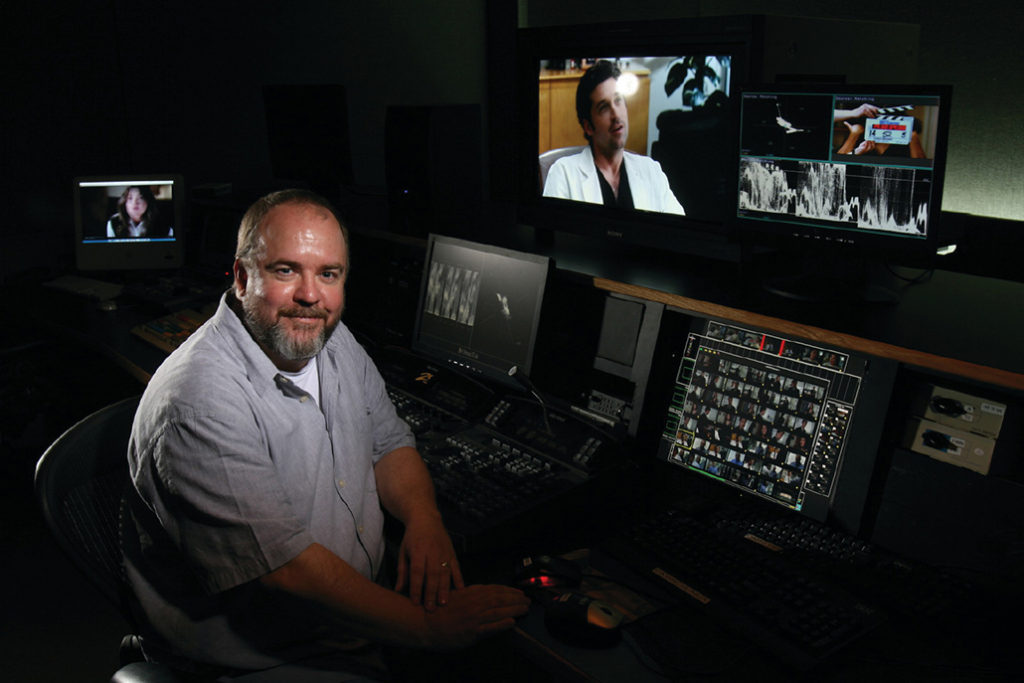
Colorists now have huge flexibilities in the color suite, due to a variety of color correction devices. “You have the ability to do much more in color grading than you used to, with a vast range of manipulation in isolated areas,” says Field, who uses the Da Vinci 2K Plus to work on The Simpsons, Scrubs, The War at Home, The Loop, 24 and other TV shows. “Before, you were limited to simple primary and secondary color correction. With the newer tools, you have the ability to change one color in the image and not change anything else. You can go after a sky, for example, and take something that was potentially lost and bring it back so that it looks like a sky, without affecting the image in the foreground. You can soften skin tones. Before, you were just balancing the image. With well shot material, it came out wonderfully. Now you can take it to the next level and embellish the shot.”
For Field, the Da Vinci 2K Plus affords him a range of powerful tools. “Its most useful tools are power windows and de-focus,” he says. “I can isolate areas that maybe need more help with exposure, and soften skin tones.” He also notes that film-based shows are transferred with the Thomson Spirit Datacine.
At Warners, Yarbrough, who color-corrected Oceans 13, uses a Filmlight Baselight 8, working in a room with a Christie 2K projector. “The main purpose is to create product that will go up on the big screen, so we need to see a large image,” he explains. “And you have isolations, more effects…you can put layer upon layer on the image the way it was meant to be. Instead of working with a film from a telecine device, we used high-res images scanned from film to high-res data, which we manipulate. It’s all data files, and that’s how we access it, change it and output it. When we’re finished with it, we record it back out to film, which is still the best archival medium in the world.”
At Universal Studios Digital Services, supervising colorist Scott Garrow works on a Da Vinci 2K Plus system, while DI artist Lenny Fohrer, who handles feature film trailers for the marketing department, works on an Autodesk Lustre. “On the Da Vinci 2K Plus, we have Power Grade, which gives me pre-sets, de-focusing effects, filtering effects, sepia and various degrees of bleach bypass, as well as Pro Mist and night vision looks,” says Garrow. “It’s a great tool to have.”
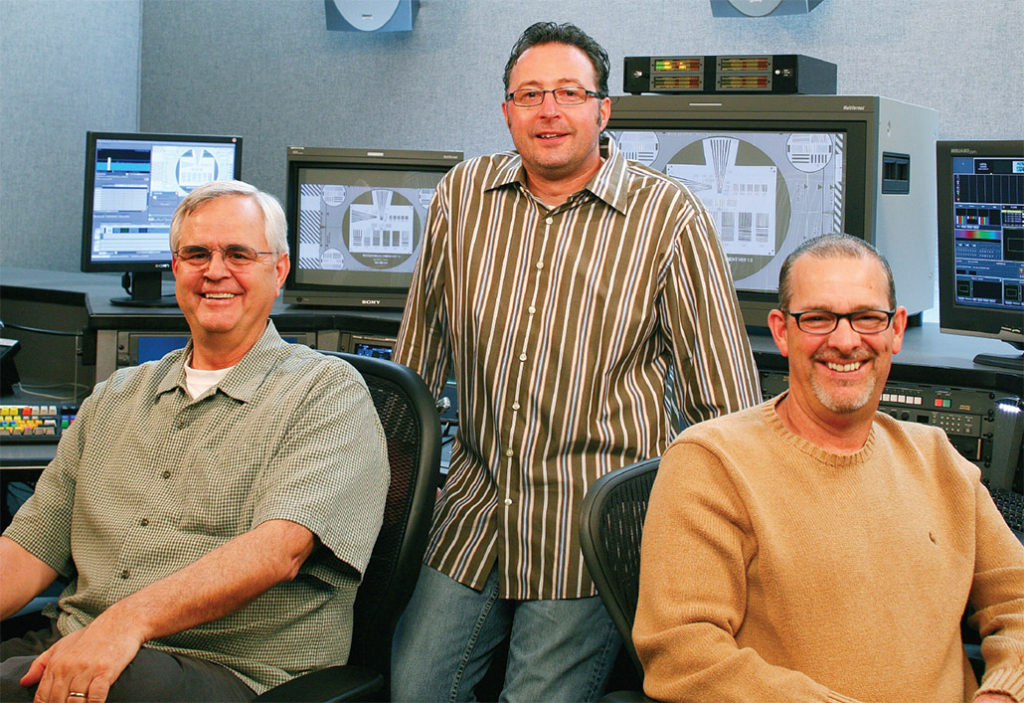
Photo by Gary Krueger/Universal Studios
“The Lustre is a software-based color corrector which works off a Windows platform,” adds Fohrer. “Within the Lustre, I can apply de-focusing, bleach bypass and various filters within the color correction process. It’s an all-in-one unit.”
Before he switched to Baselight, Warners’ Roman also worked on a number of tools, starting with the Pandora Pogle and Thomson Spectre, as well as the Lustre. “With Baselight, you’re always working in real time with no background rendering,” he explains. “It’s a very easy tool for a classically trained colorist. I get into a flow, a rhythm. Having colored commercials for seven years, I’m very used to working quickly.”
Technology has also had a dramatic impact on the colorists for dailies. “When I started assisting, it was a print and a mag,” recalls Universal’s dailies colorist Jeff Mack, who works on Friday Night Lights and ER, among other shows. “Then the TLC [an edit controller adapted for telecine use] came in, and that controlled the machines and even kept a list management of the edits and sound rolls. That was helpful. Now, Evertz’s Tracker does it even better. There’s more information available on the list, and you can correct it more easily if there’s an error. It is easier than it used to be.”
The Leading Edge
The tapeless facility is today’s buzzword. In this model, the facility transfers the film to a central server, which allows multiple artists to access the material simultaneously. The finished product is a “universal master,” from which all versions are derived.
“You have the ability to do much more in color grading than you used to, with a vast range of manipulation in isolated areas,” – Larry Field
“It’s been about three years since we’ve transferred to a central server,” says Universal’s Garrow. “Everyone has access to the server––whether it’s the people cleaning dirt and scratches or someone color-correcting. If they’re dust-busting, they can work in the background, plucking frames out, cleaning them and putting them back in, seamlessly. I don’t even know it’s going on.”
For Fohrer, who works on feature film trailers, working in a tapeless environment is a perfect panacea to the tight deadlines. “The tape machines are then available as a dub room, 24/7, because we’re just pushing files back and forth,” he explains. “Once I’m done and the director signs off, I take the 2K color-corrected files and push them into their folders and send them via fiber optic network to the Arri laser film printer.
“They’ll create a digital negative from those files and, from there, strike 3,000 prints to go to theatres throughout the country,” he continues. “I can also create a digital cinema version. The trailer department can do whatever it needs with deliverables.”
What’s in a Name?
As the technology has changed, so have the names used to identify the person responsible for color correction. “My job is changing from a telecine operator––a title I loved for a long time––to a colorist,” says Yarbrough. “A telecine operator’s job was to make the color right, give it a good look and get it to videotape. A colorist is more in the equation of defining the look of the image and helping the cinematographer and director define what they had in mind.
“We’re basically all colorists,” acknowledges Roman, who has color-corrected this summer’s release No Reservations and a digital restoration of Deliverance. “I’ve been a colorist since the day I started. Some of us just have a lot of experience with DI coloring.”
Level 3’s Field notes that “anyone who hangs film” is a telecine colorist. “A telecine colorist is an artist who works in and color-corrects during the process of film-to-video,” he explains. “A digital intermediate colorist is normally an artist who works in and color-corrects on a file [or data] platform, typically in high resolutions with the intention of a film-out. At this point, I would consider myself a colorist because I work for the moment in high-definition, tape-to-tape color correction scenarios.”
There’s one thing on which everyone agrees: “Each director and director of photography has his or her own vision, and it’s nice to share that vision and see what the final output is,” says Universal’s Fohrer. “I guess you could call it a challenge, but I love it. Every day I’m learning something new and different.”



